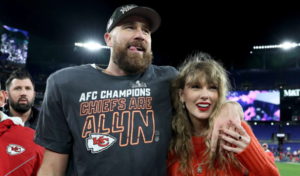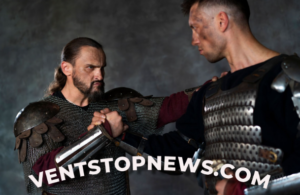
young fashion woman in pink clothes run on pink background
Models have gone through a profound transformation over time. Initially, fashions were visible, particularly as mannequins whose vital feature was to show garments on runways and in the press. Icons like Twiggy in the 1990s and Janice Dickinson in the Seventies described this period. However, the digital age has brought a seismic shift.
Social media structures including Instagram have allowed Models to domesticate their non-public brands and communicate instantly with a global target market. Today’s top models, such as Gigi Hadid and Kendall Jenner, are not just the faces of luxury manufacturers, but influential virtual creators who set trends and drive buyer behaviour.
Breaking stereotypes: The upward push of numerous models in the fashion industry
The style enterprise has long been criticized for its narrow definition of gorgeousness, but current years have seen a large shift towards variety and inclusivity. This shift brought a vanguard of models of different ethnicities, frame types, and gender identities. Trailblazers like Ashley Graham, who advocates for frame positivity, and Winnie Harlow, who brought visibility to vitiligo, are transforming the narrative. These fashions are not only celebrated for their precise appearance but also for their ability to appeal to a wider target audience, making the style extremely practical and a consultant to the global variety.
Supermodels of the 90s: The Icons Who Redefined Fashion
The 1990s became an innovative period of stylish fashion and marked the “stick insect” generation. Names like Naomi Campbell, Cindy Crawford, Christy Turlington and Claudia Schiffer have come to be synonymous with immoderate fashion and global glamour. These models have transcended the catwalks and were cultural icons and household names. They have graced the covers of mainstream magazines, starred in excessive-profile advert campaigns, and been taken into consideration for tune films and TV suggests. Their effect on trade has been so profound that it has helped enhance the recognition of favour, turning them into celebrities and reshaping the style enterprise.
Digital revolution: How virtual models are changing the fashion landscape
The advent of virtual models represents an exciting evolution in style. Using advanced CGI and AI, digital mods like Shudu Gram and Lil Miquela are blurring the lines between fact and digital art. These digital influencers boast tens of millions of followers and work with top fashion brands. They provide special benefits, including the ability to seamlessly model more than one outfit and paint 24 hours a day without bodily boundaries. This virtual revolution is not just new; it’s a demonstration of how technology is poised to redefine creativity and advertising in fashion.
Sustainable Fashion: The Role of models in Promoting Environmentally friendly trends
As the style business grapples with its environmental impact, models are increasingly becoming advocates for sustainability. Influencers like Stella McCartney and Arizona Muse are at the forefront, promoting brands that favour green practices. The models use their structures to raise awareness of sustainable materials, ethical labour practices and the importance of reducing style waste. This advocacy is necessary as clients become increasingly aware of their purchasing options and move the industry closer to a greener and more sustainable destiny.
Behind the Scenes: A Day in the Life of a Fashion Model

A day in the life of the Stylish version is much more strict and structured than it seems. They often start early in the morning with exercise to stay in shape, followed by skincare and beauty routines. The day consists of several castings and fittings where fashionistas meet designers and cast managers. A photoshoot can take several hours, which requires stamina and endurance. Evenings would perhaps include attending corporate events or maintaining their social media presence. This stressful schedule underscores the willpower and professionalism required to prevail in the aggressive world of style modelling.
Fashion Business: How Models Build Their Brands
In the modern style of business, fashionistas are not just logo ambassadors, but manufacturers in their own right. They use social media to build their private brand, participate in groups and be attractive to fans. Models like Karlie Kloss and Rosie Huntington-Whiteley have sorted their careers by starting their own groups, from fitness programs to beauty tracks. This business method allows fashionistas to have more control over their careers and earnings, recasting them as effective businesswomen who influence the development and consumer behaviour.
Modelling agencies: Guardians of Fashion Talent
Modelling companies are essential in discovering and developing new expertise. Often from a young age, they seek fashion for capacity and provide them with the education and opportunities needed to triumph. Agencies such as IMG Models and Elite Model Management have published the careers of many top models. They ensure negotiations, and stable contracts and offer advice on improving the profession. Understanding the function of these groups reveals a structured support network that allows models to navigate the complexities of corporate style.
Fitness and diet: How models keep in shape

Maintaining the figure required for modelling involves a set of strict fitness routines and carefully controlled diets. Many fashion paintings with private trainers who create customized workout plans that include energy education, cardio, and flexible physical activities. Nutrition is equally important, with diets often specializing in balanced, complete ingredients that provide essential vitamins. Models like Adriana Lima and Doutzen Kroes are recognized for their disciplined health regimes, which they often share with their fans and inspire others to adopt a healthier lifestyle.
The influence of fashion weeks: a model’s perspective
Fashion weeks in New York, Paris, Milan and London are major events in the style calendar. For fashion, these weeks are rough and exciting, bringing unheard-of revelations. A walk in the main show can free up a version’s career and provide opportunities for paintings with top designers and brands. Coaching includes castings, fittings and rehearsals, as well as maintaining peak physical condition. The Fashion Week experience gives models a platform to showcase their talent and versatility, making it a vital factor in their expert journey.
Cultural Influences: How Different Cultures Shape Fashion Modeling
The cultural diversity in style modelling brings a rich variety of patterns and aesthetics to the industry. Models from specific cultural backgrounds represent unique standards of beauty and fashion traditions that enrich the global style. For example, the rise of Asian fashionistas like Liu Wen and the influence of African models like Adut Akech highlight how exclusive cultures contribute to and shape fashion developments. This cultural infusion fosters a more inclusive enterprise that celebrates a wide spectrum of beauty and style.
Modelling Challenges: Overcoming Adversity in the Fashion World
Behind the glamour of stylish modelling lie significant challenges. Models regularly face strong opposition and regular scrutiny of their appearance. They have to manage public opinion and manage the pressures of maintaining a perfect body, which could affect their intellectual prowess. Problems such as lack of confidence in the task and the need for constant self-promotion add to the burden. Despite these challenges, many models show amazing resilience, advocating better operating situations and using their platforms to increase the mental health focus and positivity of the framework.
Iconic Fashion Moments: Legendary Models and Their Most Memorable Runway Shows
Some moments on the track ended up being legendary in record-breaking style. For example, Kate Moss’ debut for Calvin Klein, Gisele Bündchen’s electrifying presence at the Victoria’s Secret Fashion Show and Naomi Campbell’s infamous fall at the Vivienne Westwood show all left an indelible mark. These moments outline not the easiest careers of these supermodels, but in addition, set trends and create lasting memories of the stylish enterprise. They exemplify how a free runway walk can encapsulate the essence of style and leave a lasting legacy.
New models to watch: The next generation of fashion icons
The fashion business is constantly evolving and new competencies are constantly growing. Models like Kaia Gerber, daughter of Cindy Crawford, and Adesuwa Aighewi, recognized for her precise looks and strong demeanour, are among the fashion icons of the new generation. These emerging fashions convey bright perspectives and innovative styles to the business. They are often extremely outspoken about social issues and use their structures to advocate for change, making them not only style icons but also influential voices in cutting-edge subcultures.
The role of models in fashion campaigns: from concept to implementation
Models are essential to achieving style campaigns and bringing the vision of a dressmaker to a lifestyle. The process begins with conceptual meetings where the theme and aesthetics of the marketing campaign are discussed. The models then work closely with photographers, stylists and make-up artists to realize the vision. Their ability to convey emotion and narrative through poses and expressions is important. Understanding their place in this collaborative process underscores the artistry and teamwork that goes into growing impactful style campaigns.






